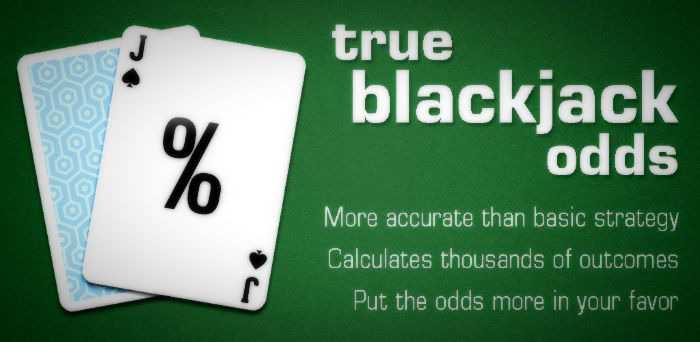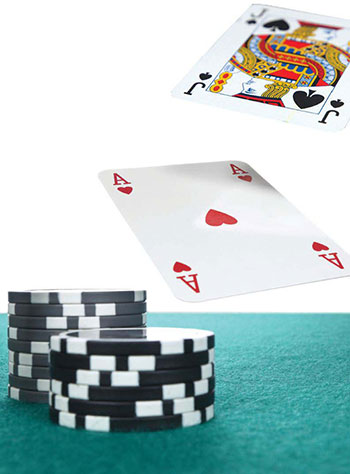Blackjack offers some of the best odds in the casino. Everyone knows that already. But what does it mean to say that one casino games offers better odds than another casino game? This page goes into some detail about how to measure the odds of a casino game. Then it continues with an examination of the specifics related to the game of blackjack.
- Blackjack Strategy Sheet
- Blackjack Strategy Chart
- Blackjack Basic Strategy
- Blackjack Strategy Trainer
- 6 Deck Blackjack Strategy
Apr 03, 2016 The best blackjack strategy that you can't find anywhere Part 1 Of Part 2. Blackjack is the American version of a popular global banking game known as Twenty-One, whose relatives include Pontoon and Vingt-et-Un. It is a comparing card game between one or more players and a dealer, where each player in turn competes against the dealer. Players do not compete against each other. It is played with one or more decks of 52 cards, and is the most widely played casino.
Odds and Probability Explained
Probability is the branch of math that covers how likely it is to achieve a certain result. Any possible result can be measured as a number between 0 and 1, with a 0 meaning that it will never happen and a 1 meaning that it will always happen. It’s probably easier to think of this number as a percentage, so something with a 0% chance of happening will never happen, while something that will always happen has a probability of 100%.
If you add the probability of something happening with the probability of something not happening, you will always get a total of 100%. So it’s always possible to calculate that number backwards. For example, if you know that there is an 80% chance of something not happening, you also know that there is a 20% chance of it happening, and vice versa.
Probabilities are sometimes explained as odds. This is just a way of expressing a probability as the number of possibilities of it failing versus the number of possibilities of it succeeding. For example, if you want to express the odds of getting an ace with the next card you draw out of a fresh deck of playing cards, then you know that the odds are 12 to 1. (For every ace in the deck, there are 12 cards that are NOT aces.)
Casinos make their money by paying out wagers at odds that are less than their odds of happening. For example, on a single number bet in roulette, the odds of winning are 37 to 1. (There are 38 different numbers, and you only bet on 1 of them in this example.) But that bet only pays out at 35 to 1.
In a mathematically perfect set of spins, you’d win once and lose 37 times. If you’re betting $1 per spin, then you’ve lost $37, but you’ve won $35 the one time you got a winning spin. The casino gets the other $2, and that’s how they stay in business.
All casino games, including blackjack, work on this seemingly-simple principle. In fact, it’s relatively easy to determine a percentage of each bet that you make that the casino can expect to receive over time. This percentage is called the house edge.
In the roulette example above, the house edge is 5.26%. That’s the amount of each bet that will be lost over an infinite number of trials. Of course, in the short term, anything can (and often will) happen, but as you get closer to an infinite number of trials, the closer the results become to the mathematical expectation.
The house edge can be as high as 25% on slot machines in Nevada, or as low as 0.5% on blackjack in the same state. But achieving that 0.5% number requires a certain amount of skill and strategy. Players who just use “common sense” or who “play their hunches” face a house edge of closer to 2-4%.
Basic Strategy Is the Key to the Best Blackjack Odds
The key to maintaining the lowest possible house edge on blackjack is to use basic strategy every time you play. By doing so, you maximize your expectation and minimize the casino’s expectation. Basic strategy is the mathematically perfect play in every possible blackjack situation.
This might seem like an unearthly number of scenarios to memorize, but it’s actually easier than you think. The dealer’s upcard is limited to 10 possibilities. Your hand is limited to 20 different totals. Since many hands will be played with the same strategy as many others, memorizing basic strategy is far easier than you’d think.
Many websites and almost all blackjack books offer basic strategy charts which can help visual learners memorize the correct strategy. The conditions and house rules can affect a handful of strategy decisions, but even then, it’s a tiny percentage of the potential situations you might face. Learning one basic strategy is better than learning no basic strategy at all. In other words, don’t get hung up on making the occasional error because of local playing conditions.

Playing Conditions and Rules Variations
The other key to getting the best odds in blackjack is to make intelligent choices about which blackjack games you’ll play. The biggest variation that you need to watch out for is the payout on a natural 21. At most casinos, a natural 21 pays out at 3 to 2 odds, but you’ll often find games that pay out at 6 to 5 odds instead.
The difference in that single rules variation is tremendous. In fact, it gives the casino an additional edge of 1.39%. In most blackjack games, this doubles or even triples the house’s edge. The easiest way to avoid that additional “tax” on your game is to just say no to any blackjack game that doesn’t pay out at least 3 to 2 for a natural.
Other variations in the rules can actually improve the player’s odds. For example, a single deck blackjack game versus a game with two decks or more gives 0.48% back to the player. That’s not nearly as significant as the 1.39%, so don’t fall for the trap of playing a single deck game with a 6 to 5 payout on a natural blackjack.
Most other rules variations have smaller effects on the house edge, but they can add up quickly when combined. For example, if the dealer hits on soft 17 (instead of standing), the house gains 0.22%. But if the player is also limited to only being able to double down on 10 or 11, the house gains another 0.18%, for a total gain to the house of 0.4%.
The Effects of Card Counting on the Odds
Entire books have been written about counting cards and how it affects the player’s odds in the game of blackjack, but for the purposes of this page, I just want to explain how card counters get an edge over the casino. Suppose you found a way to get another 1-2% edge on the casino by raising your bets when you have better odds and lowering your bets when you have worse odds?
Blackjack Strategy Sheet
For example, if you had a deck with nothing but aces and tens in it, your chances of getting a natural (and the corresponding 3 to 2 payout) would be much greater, wouldn’t it? So it would make sense to bet more in that situation.
On the other hand, if all the aces in the deck have already been dealt, it’s impossible to get a natural, which means you should lower your bet.
It turns out that each card that’s dealt out of a blackjack show affects the odds by a certain amount. By tracking the ratio of high cards versus low cards that have already been dealt, a card counter can raise or lower her bets in order to take advantage of favorable situations.
By doing so, the counter can actually gain an edge over the casino. This is mostly the result of putting more money into action when the odds are good, but some card counters also make strategy adjustments based on their count, too.

Summary
This page provides an introduction to blackjack odds. Many other pages on this site go into more details about the rules variations that increase or decrease the odds in the players and the casinos’ favor. The most important things to remember are that you should always play using basic strategy, in order to minimize the house’s edge, and also to avoid playing 6:5 blackjack games.
On This Page
Introduction
To use the basic strategy, look up your hand along the left vertical edge and the dealer's up card along the top. In both cases an A stands for ace. From top to bottom are the hard totals, soft totals, and splittable hands. There are two charts depending on whether the dealer hits or stands on soft 17.
Other basic strategy rules.
- Never take insurance or 'even money.'
- If there is no row for splitting (fives and tens), then look up your hand as a hard total (10 or 20).
- If you can't split because of a limit on re-splitting, then look up your hand as a hard total.
If you play a mixture of six-deck games, some where the dealer hits a soft 17, and some where he stands, and you only wish to memorize one strategy, I would recommend you memorize the one where the dealer stands on soft 17. The cost in errors due to playing the wrong strategy is 2.3 times higher playing a stand on soft 17 game, with the hit on 17 strategy, than vise versa.
Basic Strategy in Text
Blackjack Strategy Chart
For the benefit of my blind readers, here is the above strategy in text form, when the dealer stands on soft 17 and surrender is allowed. To use the strategy, start at the top, and follow the first rule that applies.
Surrender
- Surrender hard 16 (but not a pair of 8s) vs. dealer 9, 10, or A, and hard 15 vs. dealer 10.
Blackjack Basic Strategy
Split
- Always split aces and 8s.
- Never split 5s and 10s.
- Split 2s and 3s against a dealer 4-7, and against a 2 or 3 if DAS is allowed.
- Split 4s only if DAS is allowed and the dealer shows a 5 or 6.
- Split 6s against a dealer 3-6, and against a 2 if DAS is allowed.
- Split 7s against a dealer 2-7.
- Split 9s against a dealer 2-6 or 8-9.
Blackjack Strategy Trainer
Double
- Double hard 9 vs. dealer 3-6.
- Double hard 10 except against a dealer 10 or A.
- Double hard 11 except against a dealer A.
- Double soft 13 or 14 vs. dealer 5-6.
- Double soft 15 or 16 vs. dealer 4-6.
- Double soft 17 or 18 vs. dealer 3-6.

Hit or Stand
- Always hit hard 11 or less.
- Stand on hard 12 against a dealer 4-6, otherwise hit.
- Stand on hard 13-16 against a dealer 2-6, otherwise hit.
- Always stand on hard 17 or more.
- Always hit soft 17 or less.
- Stand on soft 18 except hit against a dealer 9, 10, or A.
- Always stand on soft 19 or more.
As I've said many times, the above strategy will be fine under any set of rules. However, for you perfectionists out there, here are the modifications to make if the dealer hits a soft 17.
- Surrender 15, a pair of 8s, and 17 vs. dealer A.
- Double 11 vs. dealer A.
- Double soft 18 vs. dealer 2.
- Double soft 19 vs. dealer 6.
6 Deck Blackjack Strategy
My thanks to Kelly for putting together the above text strategy.